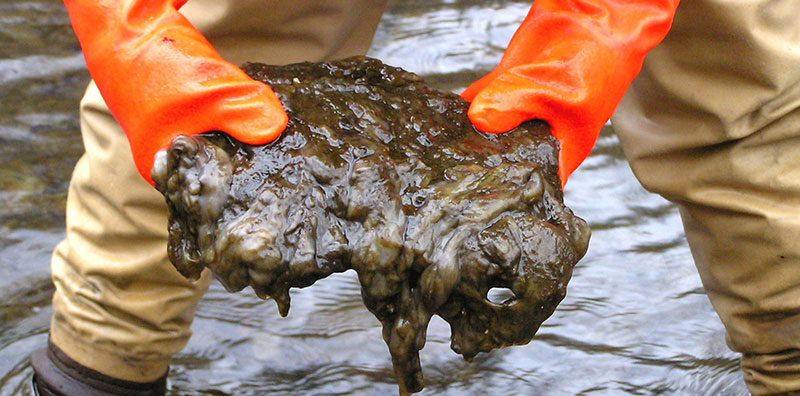Principal Investigator: Robert H. Hilderbrand, University of Maryland Center for Environmental Science, Appalachian Laboratory
Co-Principal Investigator: Stephen Keller, University of Maryland Center for Environmental Science, Appalachian Laboratory
Years Funded: 2013-2015
Project Description:
Didymosphenia geminate (aka “Didymo”) is a highly invasive freshwater diatom that was discovered in the Chesapeake watershed in the mid-2000s. At this time, most rivers and streams in the Mid-Atlantic are considered susceptible to this ongoing Didymo invasion.
Early detection, while an invasive species is still at low abundance, is critical for prevention of further spread and may give management efforts the highest chance of success. Environmental DNA (eDNA) based assays were conducted to determine the spatial extent of the Didymo spread as well as an insight as to whether or not there are multiple invasive strains of Didymo. Additionally, this study looked at how local Didymo invasions are spread. The eDNA data provides researchers with the spatial extent and abundance data on the Didymo. With this data, researchers can also determine if Didymo increases along gradients of land use, water quality, or biotic integrity.
The Appalachian Laboratory teamed with the Maryland Biological Stream Survey (MBSS) and the National Park Service to sample and analyze 76 eDNA samples from 118 Mid-Atlantic stream sites. Analysis of the samples was done using quantitative PCR, with all samples positive for Didymo sequenced to characterize the genetic diversity. In Maryland, only 2 of 76 sites saw positive results for Didymo; both were at streams previously documented as infested based on visual surveys. Several occurrences were detected in Pennsylvania at very low levels. Multiple strains of Didymo showed spatial clustering throughout the region. Due to the low number of positive samples, the analysis relating Didymo to land use, water quality, or biotic integrity was not conducted.
With an important baseline of Didymo distribution set, future monitoring and assessment programs have a historical perspective for more effective management. The Appalachian Laboratory is planning to jointly prepare a manuscript for publication with the Susquehanna River Basin Commission as well as testing future samples throughout the Atlantic region.
Publications: Environmental DNA genetic monitoring of the nuisance freshwater diatom, Didymosphenia geminata, in eastern North American streams. 2017. Diversity and Distributions.
Photo: Didymo (Didymosphenia geminate) Credit: Maryland DNR

